
There's been quite a lot of movement at ChildrensLit, book movement that is. Most of our publishers are back to sending print copies for review, and our selection shelves are overfilled. Each day our reviewers are selecting an array of new titles to review. But not everyone has a full bookshelf. Many children are spending the summer without books to take them on wild adventures and spur their imaginations. This month we'll introduce you to an organization that is bringing awareness to those empty bookshelves. We'll share a few reviews of what we've been reading and introduce you to a book award that brings the world a little closer for teens.
Shelley Oakley
Director, Children's Literature
Subscribe to ChildrensLit Now Newsletter
In case, if you have missed our previous issue.
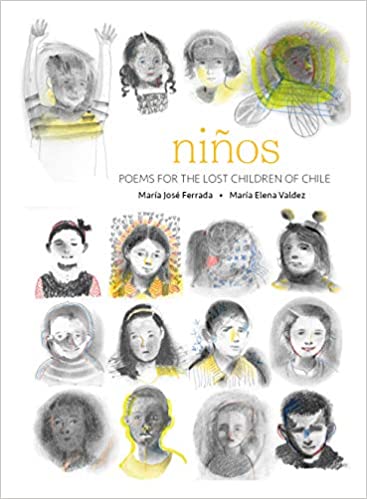
"Niños: Poems for the Lost Children of Chile" is a reverent elegy to the thirty-four children under the age of fourteen who were executed, arrested, or disappeared during Augusto Pinochet's seventeen-year rule in Chile. After a brief introduction that explains the purpose and structure of the collection and provides useful historicizing content, the poems quickly take center stage to speak for themselves. Each titled and dedicated to a specific child, all of whom are named together in a small appendix. Although this project could easily have occupied the space of mournful tragedy, the poems themselves are surprisingly light. María José Ferrada's short pieces reflect on nature, light, and isolation in a way that simultaneously highlights the unique perspectives of each child and subtly emphasizes the connecting similarities between them. Stunning pastel illustrations from María Elena Valdez contribute as much to the tone and pacing as the texts themselves, helping to strengthen the visual relationships from poem to poem and, thus, from child to child. A quick read with a powerful message, this collection is one I will read again and again.
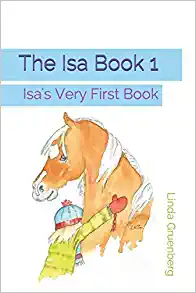
Meet Isa, an adventurous and creative girl whose experience provides the context for this engaging book for beginning readers. The eighteen double-page spreads can be considered as nine couplets. On the first page, readers see that "Isa likes" the item mentioned; turning the page, they see that the item also likes Isa. It is a reassuring pattern and one that readily supports skills-development for even the youngest readers. Gruenberg is both author and illustrator of this text, and her illustrations provide context clues and a happy, upbeat tone. Not only is Isa shown to be happy and engaged in each scenario, so too are the pigs, pirates, dragons, mice, and so on with whom she interacts. When we see them together, each seems to be smiling or otherwise showing their love. For example, in Isa's company, the cars have hearts on their windshields and decorations of her name and a horse tire cover. Isa's face is shown in only a few of the illustrations, an artistic choice that invites readers to imagine themselves in each scene, as well as to focus on the relationship Isa has with each of her story-partners. The art and story celebrate the creative space of children, with animal elements (pigs, horses, mice), realistic subjects (cars, books), and magical characters (dragons, pirates, angels). The inclusion of reindeer may be an unexpected surprise to American readers but hints at Gruenberg's personal life in both Michigan and Sweden. The tightly controlled vocabulary ensures that children will quickly master this book, while the lovely and evocative illustrations invite them to return to it again and again. Other books in the series include Isa's Very Second Book, Isa's Snowboard Book, and Isa's Soccer Book. Together with those books, or alone, this can serve as a delightful prompt for an early education literacy unit. After sharing the book as a class, children could be encouraged to consider, discuss, and illustrate some of their own experiences, real or imagined. Recommended for home or pre-k/early education classrooms.
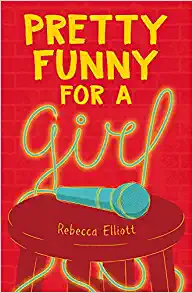
Haylah Swinton is more than the self-labeled "Pig" at school balancing two best friends, classes, and helping to care for her wild four-year-old brother while her single mom holds their home together. Haylah dreams of performing stand-up comedy. While she's waiting for her chance, she stumbles onto an opportunity to help the charming and gorgeous Leo write his upcoming set. But when helping Leo begins to drive a wedge between Haylah and her friends and threaten her own dreams of performing, she'll have to make some big decisions about what she really wants and how far she's willing to go to get it. Frank and hilarious, Haylah is impossible not to love. The relationships portrayed in the story are complex and layered, and Haylah's wrestling with her choices feels authentic and real. This is, at its core, a tale of finding confidence, learning to love oneself, and learning to differentiate between true and toxic relationships. It's a perfect book for any reader looking for a story of laughter and triumph.
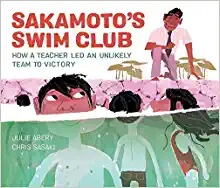
After watching the police chase migrant children for trying to cool off in Maui's irrigation canals, a local science teacher named Soichi Sakamoto convinced the sugar plantation owners he would take responsibility if they would let the children continue to swim. Although not an accomplished swimmer himself, he researched techniques and had them develop strength and endurance by swimming against the current. When the Hawaiian Commercial and Sugar Company built a community swimming pool, Sakamoto continued his coaching and challenged the swimmers to set a goal to compete in the 1940 Olympics, creating the Three-Year Swim Club. Although World War II canceled the 1940 Olympics, several of Sakamoto's swimmers went on to compete in subsequent games, including Bill Smith, who won gold in the 400-meter freestyle. Abery's crisp rhyming text gives the essence of the Sakamoto's dream, and a detailed author's note at the end offers a more detailed version for parents or curious older readers. Sasaki's bold strokes and impressionistic style showcase the vibrant colors of Hawaii's landscape and emphasize Sakamoto's dedication and commitment to a dream of success for hundreds of Hawaiian children. Pair this with other stories of Olympic perseverance, like Wilma Unlimited by Kathleen Krull or Sixteen Years in Sixteen Seconds by Paula Yoo.
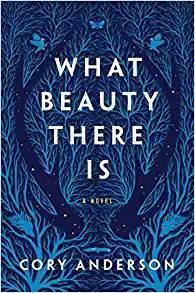
The title alone is intriguing from the get-go but becomes more so as the book goes on. At first glance, the reader could assume that the title means that the local community is bulging with beautiful things to view or that the phrase is said with a shrug as if to so say, "There must be some beauty here, but what?" The reader will have to decide which is the truth. Perhaps both. The book is well written and compelling and heart-wrenching and bitter-sweet in the end. Seventeen-year-old Jack comes from a sad home; the only ray of hope being his younger brother. Their father is in jail for theft, and their mother is a dying meth addict. Jack comes home one day to find his mother has hanged herself, and it's his job to bury her in the back yard by hand digging a grave in the frozen earth behind his garage in the middle of an Idaho winter. If the Child Services people find out that he and his brother are alone, the younger boy will be put into a foster home. Jack decides that he needs to recover the money his father stole, so his family isn't completely torn asunder. The problem is finding it. In the meantime, the father of a new classmate of Jack's is a cold-blooded murderer also looking for the money. The two teens end up working together to try to find the money. The story is told from Jack and the new classmate's points of view. Teachers will have a good time talking to students about life in general and also how to write a good book.
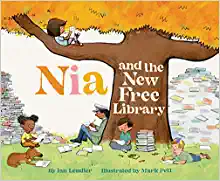
One day, a town loses its library. A tornado simply carries it away, leaving an empty lot. The townspeople, who had become disinterested in the building anyway, are not sure what to do with the space. But one person is, and that's Nia. She is determined that the library should be rebuilt. It is hard to build a library, though, without everyone's buy-in. Fortunately, Nia has an idea. She has a plan that just might remind people of why the library should be a priority. With each page turn, she seems to win a new ally, from the grocer to the mother, the child to the detective, the sea captain, and many more. With a bit of ingenuity and some hard work, Nia soon has everyone involved in making a new library. Lendler's story is as much a celebration of community and can-do attitude as it is a tribute to libraries. As Nia knows, libraries are not just about the books or even the building, but about the people and the togetherness. Pett's illustrations are a wonderful complement to Lendler's tale, showing a diverse and lively community. Readers would be remiss to skip the Author's Note, which is a lovely and personal tale about the author's familial inspiration for this story. Highly recommended for public libraries (of course!), but also school collections. This title could also be used in a classroom discussion of activism and community change; Nia is a small character but an inspirational one that will have readers cheering!
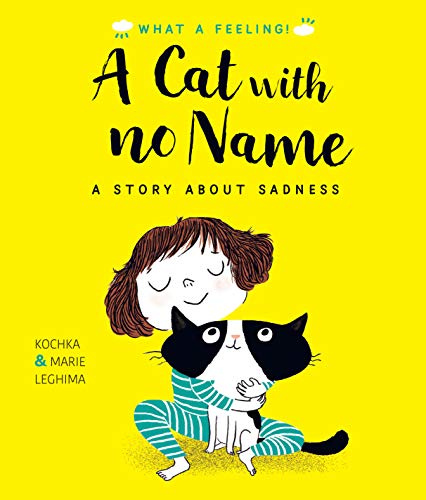
Seldom tackled head-on in children's books, sadness is the difficult topic here. One morning, while she is eating breakfast, a young girl discovers a kitten. She cares for the kitty lovingly and bonds with it while playing, walking, and sleeping together. Eventually, though, the kitty runs away, perhaps to return to its original home. The departure leaves the girl with a profound sense of loss and sadness. Her father acknowledges and validates the loss, and the girl responds in a positive manner that she can remember the kitty and the fun times they shared. The simple illustrations tell the story with gentle lines and colors. At the back of the book are tips and suggestions from a clinical psychologist/psychotherapist on how to handle the emotion of sadness with children. Encouraging parents and caregivers to validate and acknowledge a child's emotion of sadness is the key to helping children with emotional issues. This title could be an asset for elementary guidance counselor collections, as well as public libraries.
Organization Spotlight: End Book Deserts

A dedicated believer in the power of access to books, Dr. Molly Ness saw a need and created the organization End Book Deserts. A 501c3 organization, End Book Deserts promotes and highlights people and organizations who are meeting the needs of providing books to children who live in what is known as book deserts. Never heard of a book desert? You may not have heard of the term, but you probably can guess its meaning. We are delighted that Dr. Ness took some time to discuss the state of book deserts in America and how we can all contribute to ending book disparities.
What exactly is a 'book desert,' and how did the term gain momentum?
Dr. Ness: As defined by the International Literacy Association, book deserts are “Underresourced or underserved areas and homes with little access to written materials." The term was coined by Unite For Literacy in 2010 and popularized in 2016 by Susan B. Neuman and Naomi Moland, who used it in the title of an article published in Urban Education about their study on how the lack of access to printed reading material among low-income and poverty-stricken neighborhoods impacts early childhood development—research that builds upon a similar study Neuman conducted in 2001. I've also come to consider book deserts to include overlooked and underserved populations of children - for example, children living in the foster care system, in juvenile justice, with incarcerated parents, with deployed parents, etc.
Some people would find it hard to believe that book deserts exist in America, but they do. What parts of America do you see as the most prominent book deserts and why?
Dr. Ness: The presence and pervasiveness of book deserts in 2021 is staggering - 45% of our nation's children live in neighborhoods that lack public libraries and stores that sell books, or in homes where books are an unaffordable or unfamiliar luxury. 67% of the schools and programs in our nation's lowest-income neighborhoods can't afford to buy books at retail prices. As a result, 32 million American children lack access to books in their homes, schools, and/or communities. I'm particularly concerned about our nation's rural book deserts, which face the complications of a lack of public transportation and the vast geography of our rural communities.
How can we eradicate book deserts?
Dr. Ness: Fortunately, there are numerous literacy advocates - at the grassroots level up to major nonprofit organizations - who work to get books into children's hands and build a reading culture. Almost 50 of these people and programs are featured on the End Book Deserts podcast, and we can look to their innovative work as exemplars. It's also important to understand that the problem is more complicated than merely distributing books - and that these efforts must be included with longitudinal, community-based efforts that build reading culture, provide choice in relevant and engaging texts, and showcase the importance of literacy to community stakeholders.
How does End Book Deserts help programs & organizations striving to eliminate book deserts?
Dr. Ness: End Book Deserts began in 2019 with the aim of drawing attention to the challenge of book access - the podcast was created to shine the light on the people and programs working to ensure that all children have access to books. In my work, I found that these literacy advocates lacked a professional community or overarching professional organization that connected them beyond their own work. People would say, "I feel like I'm operating in a silo, and I want to collaborate with and learn from my colleagues across the country." That call for a larger community was the springboard for the 2021 End Book Deserts conference, which so far has 800 attendees. There is strength in numbers, and the more that literacy advocates come together in solidarity, the more we can move the national agenda forward.
What are some tips for creating a book donation program?
Dr. Ness: I believe that effective book donation programs are innovative in meeting people in the hearts of their communities - the more that we can get books to children at the doctor's office (like Reach Out and Read), in hair salons (like Barbershop Books), in school buses, in vending machines outside of playgrounds and WIC centers and Boys and Girls Clubs (like Soar With Reading), and at food banks (like Bernie's Book Bank), the more we send the message that literacy is valued, reading is an everyday act, and books are essential components in child and family development.
Learn more about ending book deserts and a list of organizations and programs by state at www.endbookdeserts.com. Join others interested in ending book deserts at the End Book Deserts 2021 Virtual Event, August 8 & 9. It's free, and registration is now open at www.endbookdeserts.com/event.
Global Literature in Libraries Initiative Translated YA Book Prize
Providing translated books is a beautiful way to bring a wide variety of voices into a child's or teen's world. Not sure where to find a good list of translated books for teens? Look no further than the Global Literature in Libraries Initiative Translated YA Book Prize. Sponsored by the Global Literature in Libraries Initiative, this award was established in 2019 to recognize publishers, translators, and authors of books in English translation for young adult readers. Nominees must be originally written and published in a language other than English but can also be simultaneously published in English. Most importantly, the translation should be an accurate representation of the original work, such as plot, characterization, and setting. More details about this newer award can be found at https://glli-us.org/prizes/.
2021 Co-winners, both titles translated from the Portuguese by Larissa Helena
Here the Whole Time by Vitor Martins
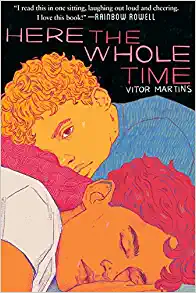
Felipe can't wait for winter break: Finally, he'll get some time away from the classmates who tease him incessantly about his weight. But Felipe's plan turns upside down when he learns that Caio, his neighbor from apartment 57, will be staying with him for fifteen days. Which is a problem because (a) Felipe has had a crush on Caio since, well, forever, and (b) Felipe has a list of body image insecurities and absolutely NO idea how he's going to handle them while sharing a room with his lifelong crush. Suddenly, the days that once promised rest and relaxation (not to mention some epic Netflix bingeing) are a gauntlet of every unresolved issue in Felipe's life. But if he can overcome his insecurities, then maybe — just maybe — this break won't turn out to be such a disaster after all.
2021 Co-winners, both titles translated from the Portuguese by Larissa Helena
Where We Go from Here by Lucas Rocha
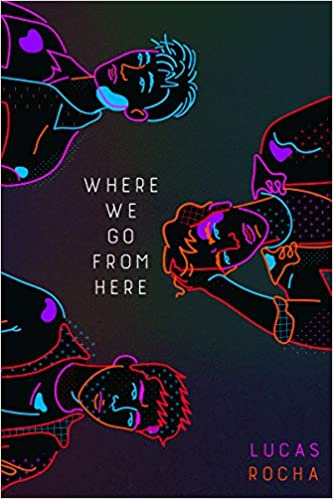
2021 Honor books
Almond by Won-pyung Sohn and translated from the Korean by Sandy Joosun Lee
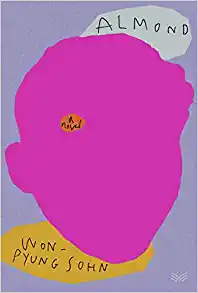
"This story is, in short, about a monster meeting another monster, and one of the monsters is me." Yunjae was born with a brain condition called alexithymia that makes it hard for him to feel emotions like fear or anger. He does not have friends—the two almond-shaped neurons located deep in his brain have seen to that—but his devoted mother and grandmother provide him with a safe and content life. Their little home above his mother's used bookstore is decorated with colorful Post-it notes that remind him when to smile, when to say "thank you," and when to laugh. Then on Christmas Eve—Yunjae's sixteenth birthday—everything changes. A shocking act of random violence shatters his world, leaving him alone and on his own. Struggling to cope with his loss, Yunjae retreats into silent isolation, until troubled teenager Gon arrives at his school, and they develop a surprising bond. As Yunjae begins to open his life to new people—including a girl at school—something slowly changes inside him. And when Gon suddenly finds his life at risk, Yunjae will have the chance to step outside of every comfort zone he has created to perhaps become the hero he never thought he would be.
2021 Honor books
The End by Mats Strandberg and translated from the Swedish by Judith Kiros

When will the world end? With Foxworth, a massive comet, hurtling toward Earth, humanity now knows the exact date. Seventeen-year-old Simon wants to spend his last weeks with the people he cares about most, especially his goal-oriented swimmer ex-girlfriend, Tilda, who dumped him shortly after the news broke. Since Lucinda was diagnosed with cancer, she's retreated into herself preparing for the inevitable. Suddenly facing down a death that makes her the same as everyone else, she longs to connect again but doesn't quite know where to start. Reaching out to her former best friend Tilda seems like a good first step. Then Tilda is found dead and accusations start circling that Simon is the killer. As the days tick down, Simon and Lucinda only want to know the truth, but the more they uncover about the final days of the girl they both cared for deeply, the clearer the things that really matter become. This novel probes the question, 'how would you spend your last days if you knew exactly when they'd run out?'